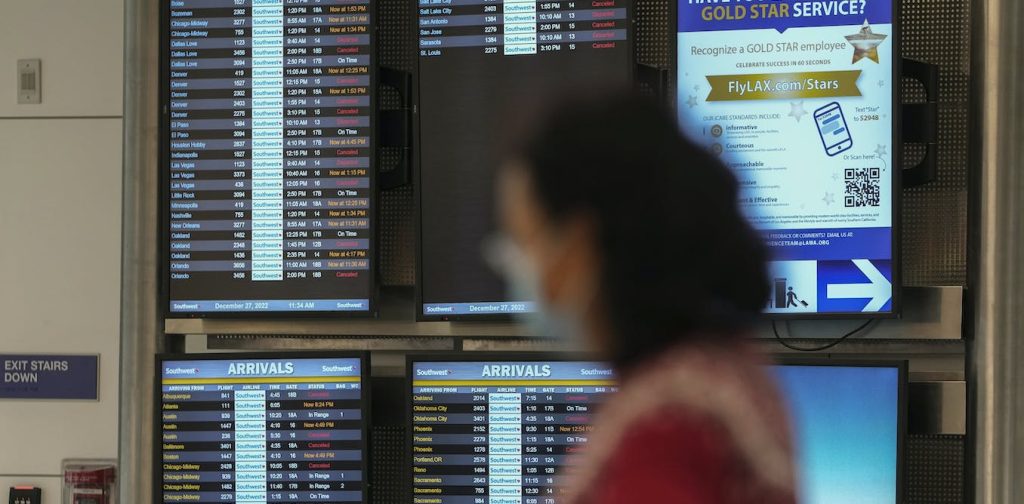A snowball effect initiated in Vancouver created an avalanche of travel chaos over the holidays at a time when many had overcome their fear of travelling following the COVID-19 pandemic and thought it was worth travelling again.
A heavy winter storm first affected Canada’s second busiest airport, the Vancouver International Airport. Other storms quickly spread across the country with a disastrous impact on holiday travel. Many people were stuck in planes, trains and automobiles or were stranded in airports.
This is a stale plot line, reminiscent of the summer of 2022 when thousands of flights were disrupted, leaving customers angry and earning Canada a bad reputation. Toronto Pearson Airport became the worst airport in the world for delays and cancellations.
It’s easy to blame the weather for the airline chaos, but deeper problems caused this turmoil.
Weather can’t be the main culprit
Canadians know the risks associated with winter travelling. As smart consumers, they are aware that weather can always have an impact on travel. But shouldn’t the transportation sector across Canada be able to effectively manage weather-related crises?
The chaos felt by Canadian consumers cannot be blamed on weather alone. After all, similar signs were seen this past summer.
Most of the travel-related trouble in the summer was linked to a labour deficit that had been well identified by the sector and signalled earlier. This shortage had been ongoing long before 2020, but the pandemic exacerbated it.
Once travel resumed, the labour crisis became more visible. Government, airports and airlines should have planned with more urgency, especially since they had known about the gravity of the situation since 2018.
Following the summer chaos, Transport Minister Omar Alghabra felt confident that the trouble was behind us. The recent winter catastrophe proved otherwise.
Crew shortages
The airline chaos over the holidays can be attributed to three main problems: labour, disruption management and communication.
Labour remains a major concern for airports and airlines. In January, the CEO and president of the Greater Toronto Airports Authority acknowledged this, saying: “Labour is still very weak across the board of our partners.”
THE CANADIAN PRESS/Paul Chiasson
Canadian airlines have been delaying and cancelling flights for months due to crew shortages. These staffing issues were magnified over the holiday season with Canadian airlines’ performance being ranked as among the worst in the world.
Sunwing left travellers stranded in Mexico and cancelled flights because of a lack of pilots — a problem identified months earlier that could have been dealt with. Hiring foreign pilots would have offset the pilot shortage, but Sunwing’s pilot union opposes the hiring of foreign workers.
Disruption management
The second issue is that the disruption management systems used by airlines don’t appear to be the most efficient. Disruption management systems are used to “reassign resources (like flights, aircraft and crews) and redistribute passengers to restore the schedule while minimizing costs.”
This inefficiency is expensive, both in dollars and customer satisfaction.
The chaos was caused, in part, by the airlines’ inability to adequately match the availability and flow of aircraft, crew and passengers. This is a complex management problem that can only be resolved with modern technological tools.
Not having the right tools can cripple airlines, as seen recently with Southwest Airlines. Some travel tech companies, like Amadeus, propose disruption management solutions to help airlines recover aircraft, crew and passengers during and after a crisis.
(AP Photo/Damian Dovarganes)
Communication and passenger rights
The final and potentially most frustrating problem for consumers was the lack of communication from airlines. A key aspect of crisis management is communicating effectively and ethically with consumers.
Travellers were left stranded and powerless with little information on possible solutions from airlines. There are passenger rights in Canada, but do Canadians know their rights? And are these rights being respected by governments and airlines?
According to the 2019 Air Passenger Protection Regulations, passengers must be informed of their rights in a timely, clear and accessible way. Airlines must provide passengers with information for flight delays or cancellations, denial of boarding, and lost or damaged baggage.
As of September 2022, airlines “flying to, from and within Canada must now issue a full refund for flight cancellations and delays if passengers can’t be accommodated on a new flight within 48 hours.”
However, airlines use loopholes, invoking “safety reasons” to avoid paying fines and compensation to travellers.
Clearly, current regulations are not enough to protect travellers, and airlines are not fined by the Canadian Transportation Agency for failing to provide compensation under the legislation.
The Canadian government seems to agree with this assessment. On Jan. 24, Alghabra said the government is planning to overhaul the air passenger bill of rights this coming spring. Changes will include regulatory reform and potentially new legislation.
Industry should be better prepared
Canadians are used to hearing “I’m sorry.” But after the transportation crisis this past holiday season, apologies from some major airlines, airports and government officials are not enough. They’ve heard it before. It’s time to protect passengers from travel companies.
The federal government, airports and airlines have a joint responsibility to improve operations, manage the labour gap and address better customer protection before another blizzard can be used as an excuse.
Indeed, airlines are now asking to share responsibilities with other stakeholders such as airports, air controllers, security and screening personnel, or the Canada Border Services Agency.
The storm exposed a lack of operational preparedness and a failure to put in place effective disruption management systems. Today, passengers know that apologies from government, airports and airlines are not acceptable answers for major travel disruptions. We all deserve better.

